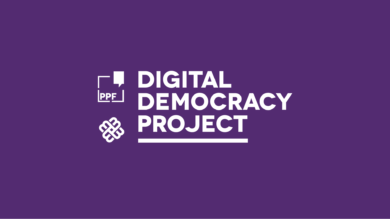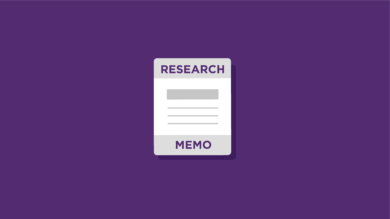
DDP Research Memo #3: Polarization and its Discontents
Polarization in Canada vs. echo chambers on social mediaExecutive Summary
Researchers, pundits and armchair analysts have argued for some time now that Canada is becoming more like the United States when it comes to polarization—typically understood as the segmenting of society into increasingly isolated and mutually incomprehensible political tribes. It is also common to see at least some of the blame for polarization placed on the media, where increasingly partisan social media echo chambers amplify disagreement and distort the public conversation.
Yet while there is some evidence that Canadians are polarized, according to our data, the story is a bit more complicated than is often assumed. In particular, the usual narrative of social media-based echo chambers driving real-world polarization is not supported by our survey and online data. Yes, some small subset of Twitter users tend to create online echo chambers, but our survey findings suggest that the offline impact is very limited.
Ultimately, the biggest driver of polarization seems to be ideology and partisanship themselves. As our political parties have become more ideologically distinct, their strongest partisans have tended to feel more distant from each other. This echoes one of our findings from our first research memo: it is the media consumers with strong partisan tendencies who are more likely to become misinformed with news exposure, especially via social media.
Key Findings
- We find evidence of affective polarization—dislike of parties or their supporters on the other end of the political spectrum simply because they belong to an opposing group—among the Canadian public.
- Twitter users of all partisan stripes tend to create their own polarized spaces online. They are more likely to follow only candidates from their own party than others.
- Media sources that draw a highly partisan audience are only viewed by a small percentage of Canadians who share those partisan leanings. What makes someone more likely to consume these news sources is not how partisan they are, but how much time they spend on social media.
- However, polarization does not appear to be linked to media consumption—either for traditional media, social media, or media sources that are preferred by mostly left-leaning or right-leaning supporters.
Survey Results
When it comes to measuring polarization, researchers distinguish between affective polarization—a dislike of parties, or their supporters, on the other end of the political spectrum simply because they belong to an opposing group—and ideological polarization, in which people hold divergent views on political issues that don’t bleed into their feelings about the people or parties that support them. However, research has been limited on the degree to which Canadians are affectively polarized.
We measured affective polarization in three ways that are adapted from American public opinion research: warmth gap, which asks for survey respondents’ feelings toward their own party and others; affect gap, which asks respondents to associate positive or negative words with the parties; and social distance, which asks how comfortable respondents would be having someone from a different social group as a friend, neighbour or in-law. We averaged feelings toward the NDP and Liberals to represent affect toward left-leaning parties and used feelings towards the Conservatives to represent affect toward right-leaning parties.
Our survey found clear signs of polarization across all three of these measures. We also found that Canadians do not appear to strongly distinguish between party officials and their voters. When looking at the affect gap, half of our respondents were randomly assigned questions asking them to describe party officials and candidates, while the other half were asked to describe the party’s voters. There was no significant difference between respondents’ feelings toward the opposing party’s official representatives and supporters. This is troubling because it shows that polarization may not just influence people’s opinions about the parties, but also how they view ordinary Canadians.
Social Media Analysis
Canadians are also creating their own polarized spaces online. We looked at approximately 50,000 Twitter users who followed at least five Canadian election candidates and classified them as “partisans” of the party that includes most of the candidates they followed. No matter which party they supported, the vast majority of candidates they followed came from their own party. At the most-concentrated end of the spectrum, only 10 percent of the candidates followed by People’s Party of Canada partisans belonged to parties other than the PPC. Even at the least-concentrated end, Green partisans followed non-Green Party candidates only 30 percent of the time. This means it is much less likely that politically engaged Twitter users are receiving messages from parties other than their own.
There have also been concerns about the rise of highly partisan media sources in the Canadian news environment. We looked at the extent to which Canadians at the right or left end of the political spectrum consume media that is mostly preferred by people with similar political leanings. To test for this, we took our partisan sample of Twitter users and examined the news sources they follow, identifying which sources were most likely to be followed by supporters of a given party. For example, PressProgress, Rabble.ca and The Tyee were more likely to be followed by NDP and Green partisans, while True North News, The Post Millennial and The Rebel were more likely to be followed by PPC and Conservative partisans. Our survey showed that these partisan-favoured news sources were only viewed by a small percentage of respondents from the same partisan group. Only 16% of partisan Canadians report any exposure to this type of media, and less than 1% report that more than half of their media diet comes from these sources. What made someone more likely to consume these news sources was not how partisan they were, but how much time they spend on social media.
Another common explanation for increased polarization is that individuals select into media environments that reinforce their political views – so-called filter bubbles or echo chambers, which can be exacerbated by social media. However, our survey data show little difference in polarization between respondents who have high exposure to social media and those who have low exposure. The same is true for traditional news sources, as well as media outlets that draw mostly left-leaning or right-leaning supporters.
Instead, those who saw themselves as stronger supporters of their own party were most likely to show signs of polarization, as well as those who perceive opposing parties to be ideologically remote from them.
Methodology
Our survey data team conducted an online panel survey of 1,271 Canadian citizens 18 years and older using the online sample provider Qualtrics. The sample was gathered from Aug. 28-Sept. 5. Data was weighted within each region of Canada by gender and age to ensure it adequately represented the Canadian public. Survey respondents were asked questions related to basic demographics, as well as their partisan, ideological and issue preferences. We present 90% confidence intervals for each of our figures below.
For our online data research, we gathered a list of all the Twitter followers of all declared major party candidates (as of Sept. 8) alongside a list of followers of 612 news outlets and affiliated journalists. We first identified active partisan consumers in the election, which we defined as individuals who follow more than five rank-and-file candidates from major parties. (We exclude the top 5% most-followed individuals from each party to account for the very high numbers of followers of some party leaders, where a follow does not meaningfully indicate partisanship.) We labelled each of these approximately 50,000 Twitter users as partisans based on the party that includes most of the candidates they followed. We then looked at their follow patterns of other-party candidates and media organizations, as well as their sharing behaviour, to determine partisan-congenial sources of news.




